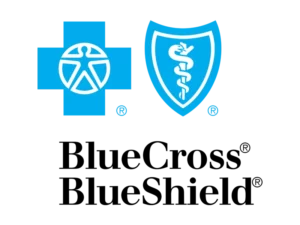Feeling Hopeless About the Future: Coping Strategies for Teens

Teenagers today face many stressors that can have a big impact on how they view their life and their future. Between academic pressure, family expectations, and social challenges within friend groups, it’s only natural for teens to feel overwhelmed at times. While some adolescents develop healthy coping skills to handle these pressures, others may experience deeper emotional distress and a feeling of hopelessness about what the future may bring.
No parent wants to see their child upset or struggling, but sometimes the stress can become too much to manage alone. Identifying and acting early can help prevent early teen hopelessness symptoms from escalating into a bigger problem.
The aim of this article is to give parents the knowledge they need to provide timely help for teens showing signs of hopelessness. It will focus on the following important topics:
- Defining Hopelessness
- Why teens feel hopeless
- Teen hopelessness symptoms
- Treating emotional distress in teens

Defining Hopelessness
Hopelessness can mean different things depending on the context, but at its core, it describes a persistent belief that the future holds no positive outcomes or opportunities. However, understanding how various researchers define hopelessness can help us better see how it applies to teens today.
One major psychological theory describes hopelessness as a system of negative assumptions about yourself and your future.1 Another defines it as the belief that you will never be able to reach your goals.1 A third classical view frames hopelessness as expecting negative outcomes for something you deeply desire, combined with the feeling that you can’t change your situation.1
A recent study brings these ideas together into one cohesive definition of hopelessness: Hopelessness is a cognitive state with at least three main components – poor expectations about the future, blocked goal-directed processing, and a sense of helplessness.1
For the purpose of this article, we will focus primarily on hopelessness that involves negative expectations about the future. This is especially relevant for adolescents, who are going through major changes in their lives and often worry about what lies ahead.
Why Do Teens Feel Hopeless?
Now that we’ve defined hopelessness, the next question is what causes chronic negative thinking in teens. As with many aspects of adolescent mental and emotional well-being, the causes are varied and differ from teen to teen. However, some of the biggest factors include bullying,2 school pressure,3 and loneliness.4 Let’s look at each of these in more detail:
Bullying and Hopelessness
Bullying can take many forms, but it is defined by a power imbalance where one person repeatedly harms or intimidates another. For teenagers, this can mean social exclusion, verbal abuse, physical abuse, spreading rumors, and manipulation by peers.2
Research shows that repeated exposure to bullying can lead directly to the development of teen hopelessness symptoms.2 While bullying has always been a major issue for young people, cyberbullying has become an additional concern over the last few years. Studies show that both in-person and online bullying can have serious negative effects and potentially a mental health crisis in teens.2
Hopelessness Related to School Performance
Several studies have also found that academic pressure can also cause emotional distress in teens, including feelings of hopelessness. In general, when adolescents have positive experiences in school, they tend to be more confident and develop a better sense of emotional well-being. In contrast, constant academic struggles or believing that you have no real control over your academic future tends to cause more negative thinking in teens.3
However, while intelligence and academic ability can affect how hopeful a student feels, even high-achieving teens may lose hope if they believe they’re not doing well enough or that their efforts don’t matter.3 Particularly as schoolwork becomes more demanding, this combination of pressure and self-doubt can make any teenager feel inadequate or without hope.
Loneliness
Loneliness is another major contributor to teen hopelessness symptoms. Research shows that prolonged loneliness increases the risk of depression and emotional distress in teens by slowly eroding their sense of hope.4 It is also well understood that adolescents are more likely to feel lonely than either younger children or adults.4
It is important for parents to understand that loneliness doesn’t just mean being alone. Rather, loneliness can mean that a teenager has negative feelings about their social relationships, even when those relationships may appear healthy from the outside.4 In other words, a teen may have friends and a supportive family but still feel disconnected or misunderstood because of how they perceive those connections.
What Are Common Teen Hopelessness Symptoms?
Teen hopelessness symptoms can vary a lot, but identifying them early can enable parents to seek timely mental health support. Below are some of the main signs of depression and hopelessness in teens:5
- A persistent sad, low, or depressed mood that lasts most of the day, over multiple days
- Loss of interest in activities that used to be enjoyed
- Changes in eating habits, which may lead to noticeable weight gain or loss
- Fatigue or low energy, sometimes resulting in reduced physical activity or motivation
- Sleep problems, including trouble falling asleep, staying asleep, or sleeping much more than usual
- Negative self-talk, including frequent comments about worthlessness or ‘not being good enough’
- Trouble concentrating, often noticed first at school
In addition to the symptoms listed above, your child might start to display more concerning behaviors that are indicative of a mental health crisis in teens. If you notice that they are talking about death or harming themselves, this is a major red flag, and you should seek immediate teen suicidal thoughts help. 2,3,5
Treating Emotional Distress in Teens
If your child is exhibiting any of the behaviours described above, you may need to consider therapy or other forms of mental health support. There are many options for treating depression, hopelessness, and negative thinking in teens, but three are especially well-researched: Cognitive Behavioral Therapy (CBT), Dialectical Behavior Therapy (DBT), and medication therapy.
Cognitive Behavioral Therapy
For overwhelmed teens struggling with hopelessness and depression, cognitive behavioral therapy (CBT) is often the first line of treatment recommended.6,7 There are five main components of the overall CBT treatment model for children and adolescents. These are:7
- Psychoeducation
- Coping skills training
- Problem-solving training
- Cognitive restructuring
- Behavioral strategies7
These techniques have been proven effective for depression, teenage anxiety treatment, and a range of other mental and emotional difficulties. For this reason, CBT is considered a transdiagnostic model, meaning it can be adapted to treat multiple conditions.7
A key part of CBT is learning to spot and challenge negative thinking in teens. Therapists can then help their clients explore the purpose of negative thoughts and question whether they help or harm them.7 Once this awareness develops, the teen can then begin replacing unhelpful thoughts with more balanced ones and practice healthier responses in real-life situations.
Importantly, because CBT is problem-focused and goal-oriented, it works best when teens acknowledge that something needs to change and feel ready to participate in that process.8
For teen anxiety treatment, CBT often targets avoidant behaviors, such as steering clear of fear-inducing situations. While avoidance may bring temporary relief, it often prevents progress in the longer term. CBT helps teens understand how avoidance feeds anxiety, and gradually introduces coping skills to face challenges with confidence.
Dialectical Behavior Therapy
Dialectical behavior therapy is particularly helpful for teens experiencing suicidal thoughts9 or severe emotional distress. Originally developed to treat borderline personality disorder (BPD) in adult women, DBT has since been adapted for adolescents as DBT-A, with strong evidence supporting its effectiveness for a wide range of emotional and behavioral issues.9
DBT for teens is built around four core modules:9,10
- Mindfulness
- Emotion regulation
- Distress tolerance
- Interpersonal effectiveness
Together, these coping skills help teenagers strengthen their sense of self-worth and feel more in control of their emotions and actions.9
DBT can also provide relief help for overwhelmed teens by teaching them how to acknowledge and validate difficult emotions rather than suppress them. This approach helps reduce impulsive or harmful behaviors and promotes healthier ways to handle stress.9
Like CBT, DBT is flexible and can be used to treat several different mental health challenges. Research has also shown positive results for adolescents with eating disorders (ED), oppositional defiant disorder (ODD), and trichotillomania.10
Medication Therapy
In some cases, medication can be a helpful addition to a teen’s depression treatment plan. Selective serotonin reuptake inhibitors (SSRIs) are the most commonly studied antidepressants for adolescents. For example, research shows that fluoxetine, sertraline, citalopram/escitalopram, and venlafaxine can be effective compared to no treatment at all.6
However, antidepressants can come with possible side effects, and close monitoring is important. For this reason, inpatient teen depression treatment is often the safest setting medications can be initiated, changed, and discontinued as needed.11
Depending on the severity of your child’s depression and their specific symptoms, different levels of care may be recommended. In urgent or crisis situations, both teens and their parents can also call a teen mental health hotline, including the Crisis Text Line, Lifeline, and 988.12

MissionPrep: Mental Health Treatment for Teens Near You
If you’ve been searching for “mental health treatment for teens near me”, Mission Prep can help. We know that all the options available can be completely overwhelming, but we make the process simpler by offering clear guidance and professional support at every step.
Our services include inpatient mental health treatment, residential treatment, intensive outpatient programs, and outpatient therapy. This allows us to match each teen’s level of need with the right care.
Reaching out is the first step to getting help for overwhelmed teens. Call us today to find out more about how our expert practitioners can provide the best possible treatment and support for your child.
References
- Marchetti, I., Alloy, L. B., & Koster, E. H. (2023). Breaking the vise of hopelessness: Targeting its components, antecedents, and context. International journal of cognitive therapy, 16(3), 285-319. https://doi.org/10.1007/s41811-023-00165-1
- Nguyen, T. H., Shah, G., Muzamil, M., Ikhile, O., Ayangunna, E., & Kaur, R. (2023). Association of in-school and electronic bullying with suicidality and feelings of hopelessness among adolescents in the United States. Children, 10(4), 755. https://doi.org/10.3390/children10040755
- Shek, D. T., & Li, X. (2016). Perceived school performance, life satisfaction, and hopelessness: A 4-year longitudinal study of adolescents in Hong Kong. Social indicators research, 126(2), 921-934. DOI: 10.1007/s11205-015-0904-y
- Hemberg, J., Korzhina, Y., Groundstroem, H., Östman, L., Nyström, L., & Nyman-Kurkiala, P. (2021). Loneliness–two sides to the story: Adolescents’ lived experiences. International Journal of Adolescence and Youth, 26(1), 41-56. https://doi.org/10.1080/02673843.2021.1883075
- Petito, A., Pop, T. L., Namazova-Baranova, L., Mestrovic, J., Nigri, L., Vural, M. Sacco, M., Giardino, I., Ferrara, P., & Pettoello-Mantovani, M. (2020). The burden of depression in adolescents and the importance of early recognition. The Journal of pediatrics, 218, 265-267. https://doi.org/10.1016/j.jpeds.2019.12.003
- Izaki, Y. (2021). Depression among adolescents: clinical features and interventions. The journal of medical investigation, 68(1.2), 22-28. https://doi.org/10.2152/jmi.68.22
- Kendall, P. C., Rodriguez, K. A. O., Villabø, M. A., Martinsen, K. D., Stark, K. D., & Banneyer, K. (2014). Cognitive-behavioral therapy with children and adolescents. Transdiagnostic treatments for children and adolescents: Principles and practice, 161-182.
- MJ, M. (1978). Cognitive and self-control therapies. Handbook of psychotherapy and behavior change.
- Nasrah, S. K. M., Abdullah, S. M. S., & Khalid, N. F. (2025). The effectiveness of Dialectical Behaviour Therapy (DBT) in dealing with suicide attempts among teenagers: A case study. Perinatal Journal, 33(1), 404-414. https://doi.org/10.57239/prn.25.03310047
- MacPherson, H. A., Cheavens, J. S., & Fristad, M. A. (2013). Dialectical behavior therapy for adolescents: Theory, treatment adaptations, and empirical outcomes. Clinical child and family psychology review, 16(1), 59-80. DOI 10.1007/s10567-012-0126-7
- Warner, L. A., Fontanella, C. A., & Pottick, K. J. (2007). Initiation and change of psychotropic medication regimens among adolescents in inpatient care. Journal of Child and Adolescent Psychopharmacology, 17(5), 701-712. DOI: 10.1089/cap.2007.0120
- Matthews, S., Cantor, J. H., Brooks Holliday, S., Eberhart, N. K., Breslau, J., Bialas, A., & McBain, R. K. (2023). Mental health emergency hotlines in the United States: A scoping review (2012–2021). Psychiatric services, 74(5), 513-522. https://doi.org/10.1176/appi.ps.20220128













